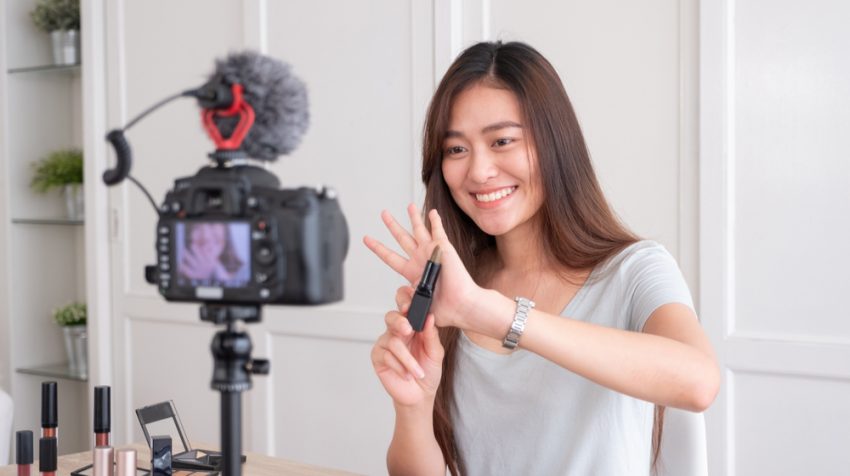We have written many articles about influencer marketing, but today we will deep into one aspect of influencer marketing, which is micro-influencers. If your brands are new and not big enough to partner with a famous celebrity, you can leverage micro-influencers instead.
What is Micro-influencers
Micro-influencers are individuals on social media platforms who have between 1,000 and 50,000 followers. These people typically build followings around niches such as travel, fashion, beauty, and photography, and cultivate communities surrounding their content. Many micro-influencers interact with fans regularly and, which helps them to generate high engagement and active audiences.
The Growth of The Micro-influencer
According to Digiday, Instagram influencers with fewer than 1,000 followers have a like rate of about 8 percent, while those with 1,000 to 10,000 followers have a like rate of 4 percent.
Similarly, there is a slight decrease in terms of like. Specifically, Instagram influencers with 10,000 to 100,000 followers see a 2.4 percent like rate, compared to 1.7 percent for those with 1 million to 10 million followers and more. Also, the comment rate follows a similar pattern.
From these numbers above, we can see that even the audience for a micro-influencer is obviously smaller, but the engagement rates are much higher.
Why You Should Choose Micro-influencers
The reason you can see from these numbers above. Micro-influencers build hyper-niche and highly engaged communities. They are more accessible to their fans than big-name celebrities, which means they drive even more engagement despite the smaller reach.
Let’s look at the example of Markerly. Sarah Ware, CEO, and co-founder of Markerly said that when her company engaged with the Jenner and Kardashian sisters on Instagram on behalf of a weight-loss tea company, the celebrities helped bring hundreds of conversions. However, when the company activated 30 to 40 micro-influencers, the brand was able to convert at an even higher level.
So why is that? Firstly, because micro-influencers offer a stronger sense of authenticity than celebrities. They can often feel like friends or peers to their audiences. Secondly, they just focus on a niche interest, then they are only known for, and knowledgeable in, one thing. For this reason, in their area, they are experts, truly knowledgeable, passionate and authentic. Therefore, these micro-influencers will be a trusted source for shoppers to follow.
For example, a sports brand collaborates with a social celebrity with 2 million followers, it can reach a big pool of audience. However, not all 2 million followers are sports fans. Instead, just 20 percent of them are really big fans of sports. So it will be more effective to activate 100 self-proclaimed athletes whose followers actually have interest in athletics.
The final reason to choose micro-influencer is because of its low up-front cost. Many content creators will feature your brand when offered a free product or trial, Then, just in a small investment you can have a great number of audiences, so why not choose micro-influencers.
You may also like Thanks to Tiktok Popularity, Sales of Phone Accessories Was Driven up
How to Get ROI
Once you have picked for your brand the right micro-influencers, the question turns into how to get ROI. Similar to other marketing methods, here is a place where things fall down.
Amir Jirbandey, head of inbound marketing at Pulsar wrote, ”The increased engagement rates achieved by working with micro-influencers mean that there is often a much higher ROI. Traditional social influencers or brand ambassadors will have a large network, but often they are not well connected. Engaging with a series of well-placed micro-influencers, who connect multiple networks together, will result in a brand’s message influencing more relevant people.”
El-Qudsi admits the difficulties in terms of ROI, “It’s hard to measure the ROI of an influencer marketing campaign, especially a long campaign.” But there is a benefit, he adds, “The ROI is really difficult. [However] we are seeing that if you’re comparing that with your own SEM or SEO efforts, the conversation rates are almost twice as much when you do that SEM or SEO campaign.”
El-Qudsi also said that influencer marketing is not the solution. In his opinion, it is more like a branding tool than a sales tool. You can use influencer marketing in almost every campaign, but do it inside a bigger plan. And you can use it to complement your SEO or email.
In conclusion, influencer marketing may not be the complete solution, but it plays an important part in solving this problem. And micro-influencing may be the way to go for it.



